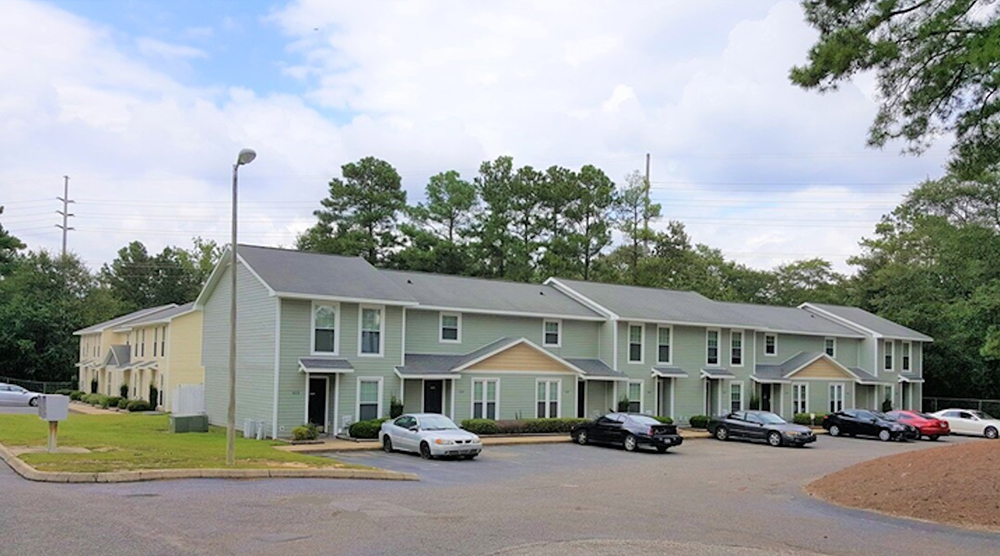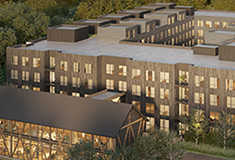News: Financial Digest
Posted: November 19, 2007
Reverse exchange aid in deferring gains
In the recent real estate market, many properties have been sitting, waiting to be sold. However, that does not keep owners intending to purchase other real estate from keeping an eye on the market for potential new properties. More often lately, the situation arises where the owner had put an offer on new property and now must purchase it prior to the other property being sold. If the taxpayer intends to utilize these properties under IRC Section 1031 as part a of a tax deferred exchange (assuming they are held for use in a trade or business or for investment), great caution must be taken to structure the deal so as to avoid the recognition of capital gains tax.
Opposite of a basic Delayed, or Forward Exchange, in which the relinquished property is sold and subsequently replacement property is purchased, a Reverse Exchange entails acquiring the new replacement property prior to the sale of the old relinquished property. The critical factor in these events is that the taxpayer (property owner) cannot be on title to both properties at the same time and get the benefit of the tax deferral. Hence, a Reverse Exchange must be structured.
There are a number of reasons why someone would need a Reverse Exchange structure: As in the scenario above, the property to be sold may still be on the market, yet a new one comes along that the taxpayer does not want to let go by, and it must be purchased first; or, it could be the transactions were originally planned to be part of forward exchange, but for some reason there is a hold-up on the sale closing, and the new purchase closing cannot be postponed without penalty.
In other markets, we have seen owners who want to sell as an exchange but are concerned about the short 45 Day Identification period for the new replacement property. They take advantage of Reverses to be able to search without the time pressure - once they have secured new property, the old is subsequently listed for sale and a Reverse Exchange set up to get the full 180 Day window.
Prior to 2000, it was unclear whether Reverse Exchanges would be given non-recognition treatment under Section 1031. In September 2000, the IRS released Revenue Procedure 2000-37 which not only recognized Reverse Exchanges to be valid, but also provided a "safe harbor" way to structure them. This protects the taxpayer in that if the Exchanger follows specific rules the IRS will not challenge the exchange.
Unlike Forward Exchanges, which can be set up with a day's notice, Reverses take time to put in place. To assist the taxpayer in this transaction, the Qualified Intermediary (QI) establishes an Exchange Accommodation Titleholder (EAT) to temporarily take title to the Exchanger's property - commonly referred to as "parking" the property. Often, a Single Member LLC is the entity to take title. It first must be determined which property will be parked. In many cases, a current Environmental Report will also be required prior to any decision to park title.
Reverse Exchanges are not common underwriting practice with most financial institutions, therefore, if financing is necessary, it takes time for the lender to review and approve such participation by the EAT. Loan documents must be customized and liability Insurance will need to be addressed, as well. Under the terms of the agreement between the EAT and the Exchanger, the property will be leased back allowing the Exchanger to use the property right away. As always, the Exchanger's tax and/or legal advisors must be consulted and involved along the way.
Needless to say Reverse Exchanges are more expensive. There is higher risk for the QI and additional work involved when title is "parked" with them.
The fees charged for the Reverse reflect the additional risk and tax reporting requirements of the EAT when facilitating this type of exchange. Additionally, the Exchanger may incur extra costs, such as recording, title insurance and closing fees. There may also be additional transfer tax - depending on state requirements.
Although Reverse Exchanges are more expensive and complicated than Delayed Exchanges, they are still a very constructive alternative used to save money and preserve wealth under IRC Section 1031. In considering its worthiness, the taxpayer needs to weigh the potential capital gain tax liability against the total costs for the Reverse. In many cases, a Reverse Exchange will still save the Exchanger thousands of dollars in taxes!
Patricia Flowers is asst. vice president for Investment Property Exchange Services, Inc. (IPX1031), Boston, MA
Tags:
Financial Digest
MORE FROM Financial Digest
Preservation of Affordable Housing secures $23.5 million in financing from Rockland Trust and Citizens Bank
Cambridge, MA The nonprofit Preservation of Affordable Housing (POAH) has secured $23.5 million in financing from Rockland Trust and Citizens Bank to transform a 150-year-old, underutilized church complex into housing. The project will ultimately create 46 affordable family-sized apartments.

Columns and Thought Leadership

Conn. hospitality market: A technical appraisal perspective on market dynamics and valuation challenges (2019-2025)
The Connecticut hospitality market has demonstrated uneven recovery patterns between 2019 and 2025, with boutique and historic properties achieving $125 RevPAR in 2025, up 8.7% from the 2019 level. Coastal resort properties achieved a $105 RevPAR in 2025, representing 10.5% growth since 2019. Casino corridor properties maintained modest growth with RevPAR improving 4.5% to $92 in 2025.

Examples of investors who used Kay Properties for legacy and estate planning purposes for rental property/portfolios - by Dwight Kay
Preserving wealth across multiple generations requires strategic planning, foresight, and the right investment vehicles. Delaware Statutory Trusts (DSTs) offer a powerful solution for families looking to build and protect their financial legacy and to efficiently plan for their estate.








